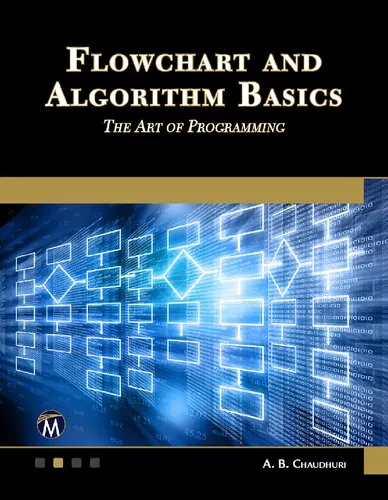Mechanics of solids and materials
4.3
Reviews from our users

You Can Ask your questions from this book's AI after Login
Each download or ask from book AI costs 2 points. To earn more free points, please visit the Points Guide Page and complete some valuable actions.Related Refrences:
Introduction to 'Mechanics of Solids and Materials'
Written by Robert Asaro and Vlado Lubarda, 'Mechanics of Solids and Materials' is a comprehensively refined resource designed for students, researchers, and professionals keen on mastering the foundational and advanced principles of solid mechanics and material behavior. This book bridges the classical and modern domains of mechanics, combining theoretical rigor with practical applications across a variety of fields.
The authors aim to provide a unified perspective on solid mechanics, delving into essential topics such as elasticity, plasticity, viscoelasticity, fracture mechanics, and advanced material modeling. The meticulous organization and accessible explanations make this book an indispensable reference that caters to learners of varying expertise levels while addressing complex engineering challenges in modern material science.
Detailed Summary of the Book
The book 'Mechanics of Solids and Materials' begins by laying the groundwork in classical elasticity theory, introducing readers to fundamental concepts such as stress, strain, equilibrium equations, and constitutive behavior of materials. With strong mathematical precision, the initial chapters build a thorough understanding of the linear elastic framework, enabling readers to grasp the underpinning mechanisms of solid mechanics.
Later chapters dive into advanced topics such as plasticity theory, emphasizing the behavior of materials beyond their elastic limit. The interplay between stress and deformation in plastic materials is explained with clarity, using real-world examples to illustrate concepts. Furthermore, complex phenomena like viscoelasticity and creep deformation are explored, offering valuable insights into time-dependent material behavior.
One of the book's standout features is its coverage of fracture mechanics and failure theories. With the increasing significance of material durability in engineering design, this section provides critical knowledge on the criteria for crack propagation, stress concentration factors, and failure under fatigue loading. The discussions are bolstered by mathematical models and experimental case studies, allowing readers to connect theoretical analysis with practical implications.
In the later sections, the authors address advanced material modeling strategies, such as microstructurally informed constitutive models and computational approaches. This is particularly useful for engineers and scientists working on modern materials like composites, polymers, and biomaterials. The integration of numerical methods, such as finite element analysis, further enriches the book's versatility and practical scope.
Ultimately, by blending classic topics with emerging areas of research, this book creates a holistic framework for understanding the interaction between mechanical forces and material behavior in engineering systems.
Key Takeaways
- A comprehensive exploration of foundational concepts, including stress, strain, and material properties.
- Detailed discussions on advanced topics, such as plasticity, viscoelasticity, and fracture mechanics.
- Mathematically rigorous yet accessible explanations that cater to a range of audiences.
- Coverage of modern materials, including composites, polymers, and emerging structural designs.
- Integration of theoretical foundations with practical engineering applications and computational methods.
Famous Quotes from the Book
"Mechanics is not merely about solving equations; it is about understanding the behavior and response of materials under the forces imposed by the physical world."
"The study of materials and their mechanical behavior stands at the intersection of science and engineering, uniting empirical observation with mathematical elegance."
"By examining the failure of materials, we uncover not just their limitations but also the pathways to innovation in design and functionality."
Why This Book Matters
The importance of 'Mechanics of Solids and Materials' transcends its content, offering a foundational resource for those aspiring to contribute to the fields of engineering design, structural analysis, and material innovation. With a strong emphasis on both classical principles and modern advancements, this book equips readers with the tools necessary to address practical challenges in structural engineering, material development, and failure analysis.
Additionally, the integration of computational approaches and advanced modeling techniques positions the text as a forward-thinking guide for researchers and practitioners working on cutting-edge projects. From aerospace structures to biomedical devices, the concepts in this book are applicable to a wide array of disciplines, ensuring its relevance in academia, industry, and beyond.
Ultimately, Asaro and Lubarda's work consolidates decades of knowledge and research into a single, cohesive volume that enhances our understanding of material behavior and mechanical systems. It is a critical contribution to the field, fostering innovation and rigor in both scientific discovery and engineering practice.
Free Direct Download
You Can Download this book after Login
Accessing books through legal platforms and public libraries not only supports the rights of authors and publishers but also contributes to the sustainability of reading culture. Before downloading, please take a moment to consider these options.
Find this book on other platforms:
WorldCat helps you find books in libraries worldwide.
See ratings, reviews, and discussions on Goodreads.
Find and buy rare or used books on AbeBooks.
1214
بازدید4.3
امتیاز0
نظر98%
رضایتReviews:
4.3
Based on 0 users review
Questions & Answers
Ask questions about this book or help others by answering
No questions yet. Be the first to ask!






![The Ultimate iOS Interview Playbook: Conquer Swift, frameworks, design patterns, and app architecture [Team-IRA]](https://s3.refhub.ir/images/thumb/The_Ultimate_iOS_Interview_Playbook__Conquer__29925.webp)







